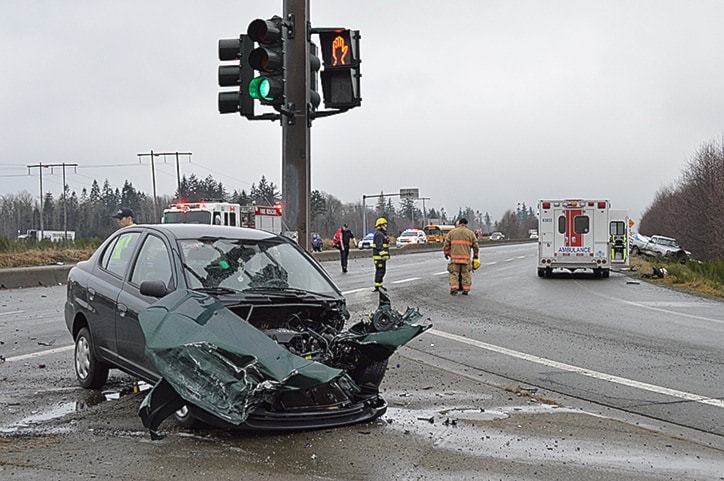Only one stretch of highway on Vancouver Island made the top 10 list of B.C.'s most dangerous, while the section of Highway 19 between Campbell River and Port Hardy ranks as second-worst on the Island for fatal crashes, according to statistics from ICBC.
The data explores the period from 2004 to 2013. Overall accidents with fatalities in the province have dropped dramatically during that time, to 125 in 2013 from 238 in 2004.
The run between Golden and Revelstoke on Highway 1 ranked as the most dangerous, with 38 crashes resulting in fatalities in the 10-year period measured.
On Vancouver Island, the stretch from Courtenay to Nanaimo on Hwy. 19 ranked in a sixth-place tie with 26 fatalities. Most of those occurred on the older, coastal highway 19A, with traffic fatalities dropping following completion of the four-lane Inland Highway.
On Vancouver Island, the second-worst stretch for fatalities is the long, mountainous run between Campbell River and Port Hardy, which had 23 fatal accidents in the decade.
That was followed by the Duncan-Victoria stretch of Hwy. 1, which includes the infamous Malahat corridor. The Ministry of Transportation and Infrastructure recently completed a $15 million safety improvement project begun last year to reduce accidents on the Malahat.
Ranking ninth on Vancouver Island was the run from Campbell River to Courtenay on coastal Hwy. 19A, with 10 fatal crashes, or an average of one per year.
Eight fatal accidents were recorded in the vicinity of the Campbell River junction where Hwy. 19, Hwy. 19A and Hwy. 28 (to Gold River) converge.
Another four fatal accidents were recorded on the Inland Hwy. 19 between Campbell River and Courtenay, ranking lowest among road stretches with recorded crashes.
ICBC indicated the report in which the data was compiled is for information purposes and is not an audited or formally validated report. Precise mapping of incidents is not always possible and counts by location are not considered comprehensive.
Also, the report covers only public roads falling under the Motor Vehicle Act, and does not include forest service roads, industrial roads or private driveways.
